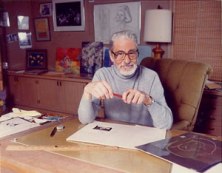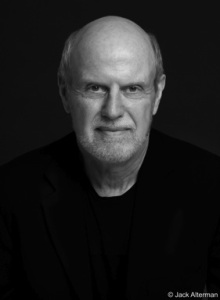
Playwright: Timothy Mason
Timothy Mason wrote the book and lyrics for the seasonal Broadway hit, Dr. Seuss’ How the Grinch Stole Christmas! The Musical. He is also a novelist; The Last Synapsid is an adventure-fantasy for kids and was published by Delacorte Press in 2009. Mason was a company playwright with Circle Rep in New York City for many years. The Circle Rep produced many of his plays including Levitation, Only You, Babylon Gardens and The Fiery Furnace. His plays have also been produced by Actors Theatre of Louisville, South Coast Rep, Seattle Rep, Victory Gardens, the Jungle Theatre, the Old Globe, the Children’s Theatre Company of Minneapolis, and the Guthrie Lab, to name a few. He is currently completing his 5-play Young Americans Cycle, commissioned and first produced by The Young Conservatory of San Francisco’s A.C.T. He has won a Kennedy Center Fund for New American Plays Award, a Hollywood DramaLogue Award, a Fellowship from the National Endowment for the Arts, the Berilla Kerr Playwrights Award, and the National Society of Arts and Letters Award.
(Source for information https://www.playscripts.com/playwrights/bios/443)

Dr. Seuss
Theodor Seuss Geisel, better known as Dr. Seuss, was born in 1904 on Howard Street in Springfield, Massachusetts. Ted’s father, Theodor Robert, and grandfather were brewmasters in the city. His mother, Henrietta Seuss Geisel, often sang various rhymes to her children at night that she remembered from her youth. Ted credited his mother with both his ability and desire to create the rhymes that he became so well known for.
Although the Geisels enjoyed great monetary success for many years, the combination of World War I and the Prohibition presented issues for the German family on the financial and everyday levels. Regardless of these issues, the family persevered and again prospered which provided Ted and his sister, Marnie, with happy childhoods.
The influence of Ted’s childhood in Springfield can be seen throughout his works. For example, drawings of Horton meandering along streams in the Jungle of Nool mirror the watercourses in Springfield’s Forest Park from the time. The fanciful truck driven by Sylvester McMonkey McBean in The Sneetches could well be the Knox tractor that Ted would have seen on the streets of Springfield. In addition to its name, Ted’s first children’s book, And To Think That I Saw It On Mulberry Street, is filled with Springfield parallels, including a look-alike of Mayor Fordis Parker, and police officers riding red motorcycles, the traditional color of Springfield’s famed motorcycles.
Ted left Springfield after grade school to attend Dartmouth College, where he eventually became editor-in-chief of the Jack-O-Lantern which was Dartmouth’s humor magazine. Sadly, his time as editor ended early when Ted and his friends were caught throwing a drinking party, which was against the prohibition laws and school policy. But he was able to continue to contribute to the magazine on the sly by signing his work “Seuss.” This is the first record of The Cat in the Hat “Seuss” pseudonym, which was both Ted’s middle name and his mother’s maiden name.
Ted’s father wanted him to be a professor so to please him, Ted went to Oxford University in England after he graduated from Dartmouth. However, his academic studies bored him, and he decided to tour Europe instead. But Oxford wasn’t all bad, it provided Ted the opportunity to meet his classmate Helen Palmer, who not only became his first wife, but was also a children’s author and book editor.
After returning to the United States, Ted began to pursue a career as a cartoonist. The Saturday Evening Post and other publications published some of his early pieces, but most of Ted’s activity during his early career was spent creating advertising campaigns for Standard Oil, which he did for more than 15 years.
As World War II approached, Ted wanted to help in the war effort and so he began contributing weekly political cartoons to PM magazine, which was a liberal publication. Too old for the draft, but wanting to contribute to fight for the cause he believed in, Ted served with Frank Capra’s Signal Corps by making training movies. It was here that he was introduced to the art of animation and developed a series of animated training films featuring a trainee called Private Snafu.
While Ted was continuing to contribute to various magazines including Life, Vanity Fair, Judge and others, Viking Press offered him a contract to illustrate a collection of children’s sayings. Although the book itself was not a large overall success, the illustrations did get great reviews which provided Ted with his first large accomplishment in children’s literature. The first book that he both wrote and illustrated was very difficult to publish and was rejected 27 times before being published by Vanguard Press.
The Cat in the Hat, which is perhaps the most defining book of Ted’s career, developed as part of a unique joint venture between Vanguard Press and Random House. Ted was asked to write and illustrate a children’s book that could be used in schools using only 225 “new-reader” vocabulary words. Because he was under contract to Random House, Random House obtained the trade publication rights and Vanguard Press kept the school rights. With the release of The Cat in the Hat, Ted became the iconic children’s book author and illustrator we know and love today.
After Ted’s first wife died in 1967, Ted married an old friend, Audrey Stone Geisel, who not only influenced his later books, but now guards his legacy as the president of Dr. Seuss Enterprises.
At the time of his death on September 24, 1991, Ted had written and illustrated 44 children’s books. His books had been translated into more than 15 languages. Over 200 million copies had found their way into homes and hearts around the world.
Besides the books, his works have provided the source for eleven children’s television specials, a Broadway musical and at leaset three feature-length motion pictures with more on the way. His honors included two Academy awards, two Emmy awards, a Peabody award and the Pulitzer Prize.
(Source: from: http://www.catinthehat.org/history.htm)

Mel Marvin
Mel was most recently represented on Broadway in the 2007-2008 season with the score for Dr. Seuss’ How the Grinch Stole Christmas, which has also been running for 12 consecutive sold-out seasons at the Old Globe Theatre in San Diego and began a yearly national tour in 2008-2009. In the same season he also wrote the score for Shakespeare’s Cymbeline for Lincoln Center Theater. He received a Tony nomination as a co-author of Tintypes and wrote the music for the Broadway productions of Yentl and Chris Durang’s A History of the American Film. He has had 9 shows produced Off-Broadway. He has served as composer or director of scores of productions in most of America’s major regional theatres, including Hartford Stage Company, Lincoln Center Theater, Arena Stage, The Guthrie, ART, La Jolla Playhouse and the Mark Taper Forum (where he was an associate artist and wrote the original music for the world premiere production of both parts of Angels in America). His work as a director includes both classical and contemporary plays, as well as a focus on new opera. After The Grinch, his best-known musical is probably Elmer Gantry, which has had several regional productions and is slated for reappearance again soon. Other work includes Great Expectations, written with author John Jakes, produced by Goodspeed Musicals; The Perfect 36 with Laura Harrington, The Book of Candy with Susan Dworkin, Gold with Timothy Mason, commissioned and produced by England’s National Theatre; and two operas. Guest from the Future, with libretto by Jonathan Levi, commissioned by Nine Circles Chamber Theatre, premiered at the Bard Summerscape Festival in August, 2004 ; and Buwalsky, A Road Opera, commissioned by Holland’s Opera Spanga, premiered in The Netherlands then toured in the U.S. the same year. His new musical, Eden, received a developmental workshop at the Eugene O’Neill Musical Theater Conference in July, 2010. He has been a member of the Board of Directors of Theatre Communications Group, as well as the recipient of many grants and awards, including three from the National Endowment for the Arts, and a member of many grants panels. He began at the NYU Graduate Musical Theatre Program as a guest mentor in l989, became an adjunct composer and director in 1991, joined the full-time faculty in 1995, became Head Faculty Composer in 1998, and became Associate Arts Professor in 2004.